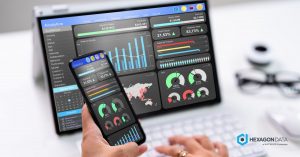|
Listen to the Article
|
Data-driven marketing has become increasingly popular in the world of digital design. As brands and businesses become more aware of the importance of using data to inform their decisions, UX data analysis has become an essential part of the design process. By leveraging UX data analysis, brands can gain insight into how users interact with their products and how they can improve their user experience (UX).
What is UX Data Analysis?
UX data analysis is the process of collecting and analyzing data related to user experience. This data is used to understand user behavior, determine user needs, and to identify areas where improvements can be made to the user experience. By understanding user behavior and needs, brands can make informed design decisions that will result in optimized user experiences.
UX data analysis can take many forms, such as tracking user navigation patterns, tracking mouse movements, eye-tracking, and analyzing feedback from surveys and focus groups. By understanding user behaviors, brands can get a better understanding of what users are looking for in their product or service and make changes based on this data.

If you are interested in user behavior, you can go futher in: Using Customer Journeys in Marketing
Benefits of UX Data Analysis
There are numerous benefits to using UX data analysis for data-driven design. The most obvious benefit is the ability to gain insights into how users interact with a product or service, which can help brands make informed decisions on how to optimize the user experience. Additionally, leveraging UX data analysis allows brands to identify areas of opportunity, such as optimizing visuals or simplifying navigation.
Using UX data analysis also helps to ensure that designs are based on actual user feedback rather than guesswork. By collecting actual user feedback, brands can make changes that are tailored to the users’ needs instead of relying on assumptions or one-size-fits-all solutions. Additionally, this helps brands better understand their target markets and create optimized user experiences for them.
Using UX Data Analysis Effectively
When it comes to using UX data analysis effectively, it’s important to remember that no two users are alike. As such, it’s important to collect a variety of different sources of data in order to get a fuller picture of how users interact with a product or service. Additionally, it’s important for brands to stay up to date on the latest trends and techniques related to UX data analysis in order to ensure that they are taking advantage of all the available options.
Finally, it’s important for brands to remember that UX data analysis is not a one-time process – it needs to be an ongoing activity if they want to remain competitive in their market. By staying on top of current trends in UX design and gathering feedback from users regularly, brands can continue to make improvements and stay ahead of the curve when it comes to creating optimized user experiences.
Ultimately, UX data analysis is an invaluable tool for any brand that is looking to create a data-driven design process. By leveraging UX data analysis, brands can gain insight into how users interact with their products and use this information to create optimized experiences for them. For brands to get the most out of their data-driven design initiatives, they need to focus on collecting quality data from multiple sources and continually analyzing it in order to ensure that their designs remain current and relevant.





